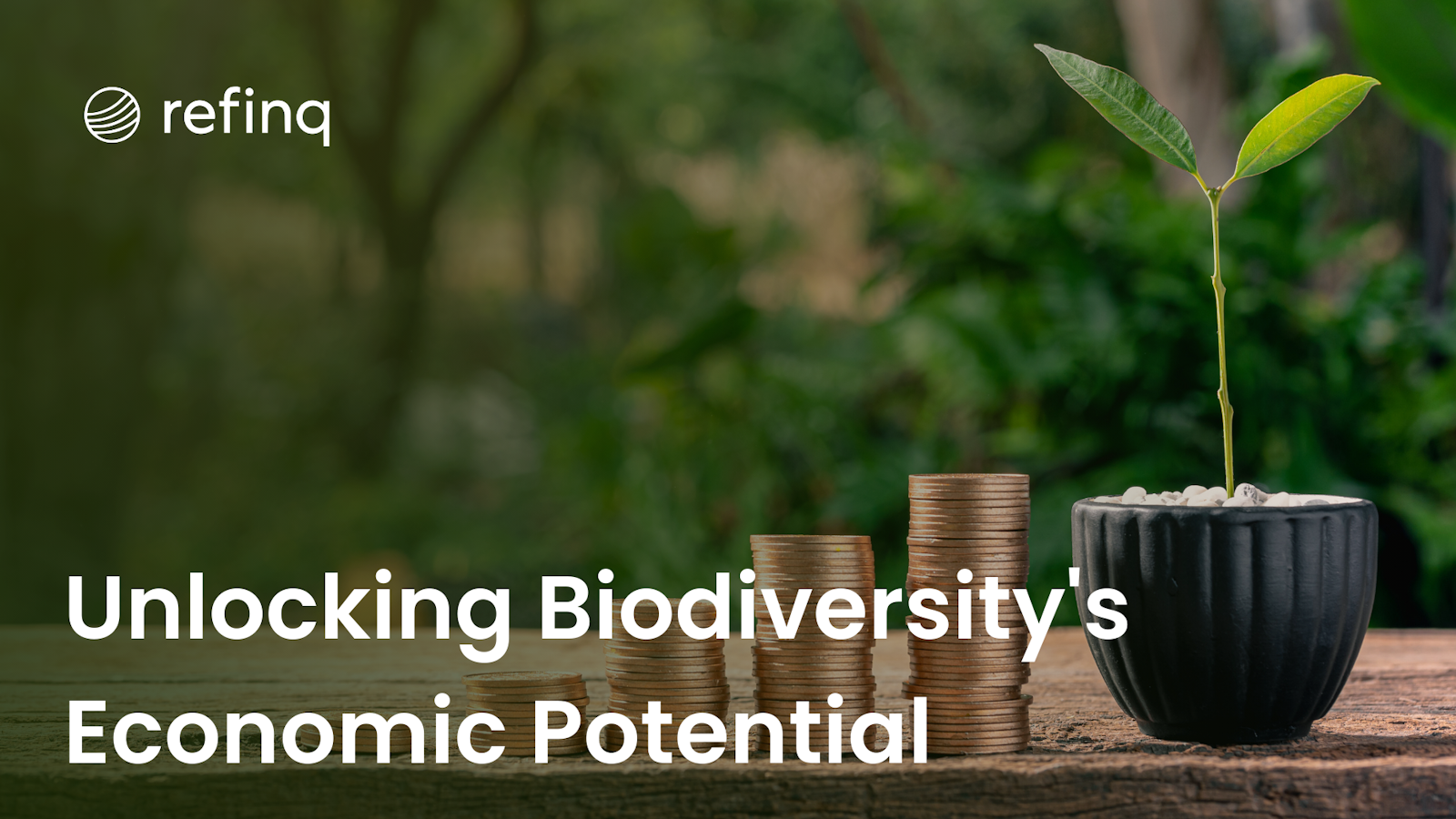

Biodiversity is more than just the variety of life on Earth; it's the backbone of our global economy. Over half of the world's GDP, estimated between £125-140 trillion, depends on ecosystem services that rely on biodiversity. These services include urban temperature regulation, crop pollination, and flood control. (Source: OECD). Understanding the economic value of biodiversity is crucial for businesses and policymakers aiming to promote sustainability and long-term economic growth. Companies like refinq are at the forefront of helping enterprises navigate environmental risks through advanced climate and biodiversity assessments. (Discover how refinq empowers businesses).
Biodiversity refers to the variety of life forms on Earth, including different plants, animals, microorganisms, and the ecosystems they form. It plays a vital role in maintaining the balance of natural processes that support life and human activities. (Learn more about biodiversity).
Global GDP Dependency: More than 50% of global GDP is reliant on ecosystem services provided by biodiversity.
Ecosystem Services: These include pollination, water purification, disease control, and climate regulation.
Sectors Affected: Agriculture, forestry, fisheries, tourism, and pharmaceuticals heavily depend on biodiversity.
(Explore the economic benefits of biodiversity).
Dependency on Pollinators: 88% of flowering plant species are dependent on animal pollinators.
Economic Value: Pollination contributes significantly to global food production and agricultural economies.
Decline in Pollinators: There has been a 33% decline in wild insect pollinators in the UK alone.
(Source: Ollerton, J., Winfree, R. & Tarrant, S. (2011)).
Urban Temperature Regulation: Biodiverse urban green spaces help reduce heat islands, lowering energy costs.
Carbon Sequestration: Forests and oceans absorb CO₂, mitigating climate change impacts.
Natural Barriers: Wetlands and mangroves act as natural barriers against floods and storms.
Economic Savings: Protecting these ecosystems reduces the need for expensive artificial flood defenses.
(Understand the economics of biodiversity).
Supply Chain Disruptions: Loss of biodiversity can lead to resource scarcity, affecting various industries.
Increased Costs: Companies may face higher costs for raw materials and regulatory compliance.
Ecosystem Collapse: Loss of species can lead to the breakdown of ecosystems, affecting global food security.
Climate Change Acceleration: Reduced carbon sequestration exacerbates climate change.
(Read about the biodiversity crisis in numbers).
Resource Efficiency: Utilizing resources sustainably can reduce costs and enhance brand reputation.
Innovation Opportunities: Biodiversity can inspire new products and services, opening new markets.
Government Initiatives: Policies promoting biodiversity can create economic incentives for businesses.
International Agreements: Compliance with global biodiversity targets can enhance international trade relations.
(Learn about research on the economic value of biodiversity).
Economic Incentives: Governments can offer tax breaks, subsidies, or grants to businesses that engage in biodiversity-friendly practices.
Protected Areas: Establishing national parks and reserves to conserve critical habitats and species.
Regulatory Frameworks: Implementing laws that limit activities harmful to biodiversity, such as deforestation and overfishing.
(Explore OECD's insights on biodiversity policies).
Green Financing: Investing in projects that support conservation, such as reforestation or sustainable agriculture.
Corporate Social Responsibility (CSR): Companies adopting CSR initiatives that prioritize biodiversity conservation.
Impact Investing: Allocating capital to ventures that generate measurable environmental benefits alongside financial returns.
Collaborative Efforts: Joint initiatives between governments and businesses to fund and implement biodiversity projects.
Research and Development: Investing in scientific research to develop new technologies for conservation and sustainable use of resources.
(Learn more about enhancing the economic value of biodiversity).
Community Engagement: Educating local communities about the importance of biodiversity for their livelihoods.
Consumer Awareness: Promoting products and services that support biodiversity conservation to influence market demand.
refinq is a pioneering SaaS platform designed to help enterprises effectively manage environmental risks through advanced climate and biodiversity risk assessments. By processing over 2.5 billion data points from earth observations and climate models, refinq provides real-time risk evaluations and forecasts of future environmental impacts with a granularity of up to 25 meters for any global location.
Actionable Insights: refinq translates complex environmental data into actionable strategies, enabling businesses to navigate nature-related risks effectively.
Regulatory Compliance: The platform aligns its assessments with international disclosure frameworks like TNFD, CSRD, ESRS, and SBTN, ensuring businesses meet regulatory demands.
Future Forecasting: With the capability to forecast environmental impacts based on four climate scenarios extending to the year 2100, refinq empowers businesses to prioritize actions based on significant biodiversity risks.
User-Friendly Tools: Offers tailored use cases such as due diligence and portfolio impact analysis, benefiting sectors like financial institutions and utilities.
By leveraging refinq's advanced geospatial analysis and machine learning capabilities, organizations can better understand the economic implications of biodiversity loss and make informed decisions to promote sustainability. (Explore refinq's biodiversity solutions).
The economic value of biodiversity is immense, underpinning over half of the global GDP through vital ecosystem services like pollination, climate regulation, and flood control. The decline in biodiversity poses significant economic risks, from supply chain disruptions to increased costs and environmental instability.
Investing in biodiversity is not just an environmental imperative but an economic necessity. By adopting sustainable practices and leveraging advanced tools like refinq, businesses can mitigate risks, comply with regulatory standards, and contribute to a sustainable future that supports both economic growth and ecological balance.
How Many Flowering Plants Are Pollinated by Animals? (Oikos)
The Biodiversity Crisis in Numbers: A Visual Guide (The Guardian)